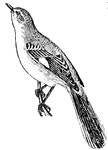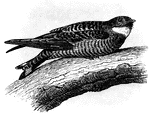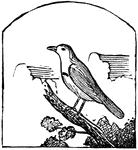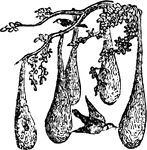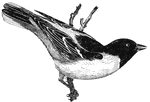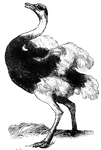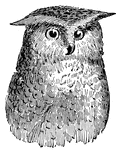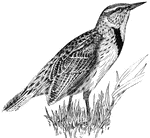
Meadowlark
The meadowlark does not travel in flocks. It eats grains and is characterized by a dark band cross its…
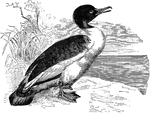
Merganser
"Mergus merganser. Merganser. Goosander. Nostrils near middle of bill. Frontal feathers extending acutely…

Red-breasted Merganser
"Mergus serrator. Red-breasted Merganser. Nostrils near base of bill. Frontal feathers extending obtusely…
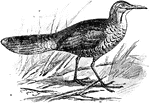
Mesites
The mesites (Mesitornithidae) are a family of birds of uncertain affinities. They are smallish, near…
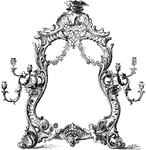
Toilet Mirror
This toilet mirror is made out of silver and includes six branches of candle holders. The style is a…
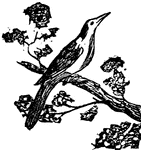
Mockingbird
A singing-bird of North America remarkable for its exact imitations of the notes of other birds.
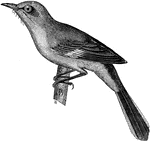
Mockingbird
"Mocking-Birds. Bill much shorter than head, scarcely curved as a whole, but with gently-curved commissure,…
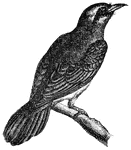
Momot
The Momots are birds still very imperfectly known. They are placed by systematists near the Toucans…

Motmot
"Momotus brasiliensis, the Motmot, from Guiana to Northern Brazil, is somewhat similar in colour (to…

Black-throated Murrelet
"Synthliborhamphus antiquus. Nipper-nosed Murrelet. Bill somewhat as in Brachyrhamphus, but stouter…

Japanese Murrelet Bill
"Synthliborhamphus umizusume. Japanese Murrelet. Temminck's Auk. Bill more elongate and acute than in…
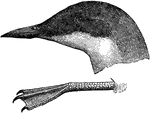
Craveri's Murrelet
"Brachyrhamphus craverii. Craveri's Murrelet. Entire upper parts unvararied cinereous, slightly darker…
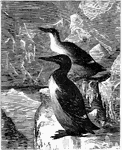
Murres
"Lomvia troile. Common Guillemot, or Murre. Adult in summer: Head and neck all around rich dark maroon…

Nandu
Nandu or "Rhea Americana, the so-called American Ostrich... is found from Bolivia Paraguay, and South…

Large Night-hawk
"Chordediles poptue. Night-hawk. Bull-bat. Above, mottled with black, brown, gray and tawny, the former…

Small Night-hawk
"Chordediles poptue. Night-hawk. Bull-bat. Above, mottled with black, brown, gray and tawny, the former…
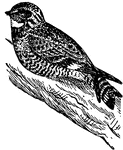
Nighthawk
An American insect-catching bird related to the whip-poor-will, a member of the goatsucker family.
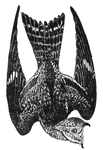
Nighthawk
The nighthawk is fit for catching insects on the wing by their very wide mouth, the gape extended far…
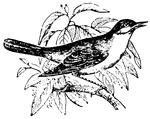
Nightingale
Nightingale, a bird famous on account of its brilliant song, which for quality and variety is not exceeded…
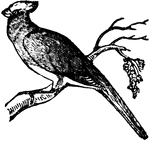
Nightingale
Nightingale, a bird famous on account of its brilliant song, which for quality and variety is not exceeded…
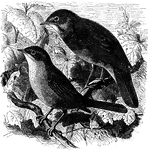
Nightingales (Philomela Luscinia and Luscinia Philomela)
"In the first rank of the Warblers stands the Nightingale, celebrated all over the world for its song,…

American Nutcracker
"Picicorvus. American Nutcracker. General characteristics of the European Nucifraga. Bill slenderer,…
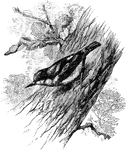
Nuthatch
"The colours in Sitta caesia, (Nuthatch) which ranges over nearly all the Palaearctic and Indian Regions,…
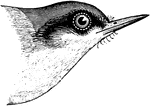
Brown-headed Nuthatch
"No black cap or white stripe on head. Upper parts dull ashy-blue; under parts sordid or muddy whitish.…
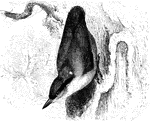
European Nuthatch
"Crown clear hair-brown; a white spot on nape; middle tail-feathers plain." Elliot Coues, 1884.

Red-breasted Nuthatch
"Upper parts leaden-blue the central tail-feathers the same; wings fuscous, with slight ashy edgings…

White-breasted Nuthatch
Nightingale, a small creeping bird seen running up and down the trunks of trees, getting its name from…
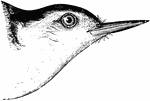
White-Breasted Nuthatch
"Upper parts, central tail-feathers, and much edging of the wings, clear ashy-blue; whole crown, nape,…

Female Uro-genital Organ
"Uro-genital organs of female embryo bird; from Owen, after Muller. a, kidneys: b, wolffian bodies;…

Male Uro-genital Organ
"Uro-genital organs of male embryo bird; from Owen, after Muller. a, kidneys: b, ureters; c, wolffian…

Female Uro-genital Organ
"Uro-genital organs of female embryo bird; from Owen, after Muller. a, testis; b, epididymis; c, sperm-duct…

Female Fowl Organs
"Female organs of domestic fowl, in activity; from Owen, after Carus. a, b, c, d, mass of ovarian ova,…
The Respiratory and Vocal Organs of a Rook
"Resipratory and vocal organs of the Rook, Corvus frugilegusm an Oscine Passerine bird; 1 a, tongue;…
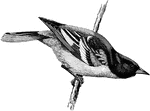
Baltimore Oriole
icterus baltimore, Baltimore Oriole, are glossy black, with yellow, bay, or orange patches-especially…

Golden Oriole
"The Golden Oriole, Oriolus galbula, which breeds exceptionally in England, is orange-yellow, with black…

Osprey
An Osprey catching a fish. "Pandion haliaetus. Fish Hawk. Osprey. Adult. dark vandyke- brown, blackening…
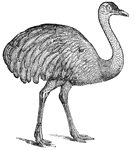
Ostrich
This south American ostrich can not fly, the wings being small; but it is a swift runner, equaling a…
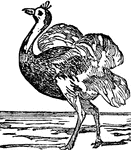
Ostrich
A large bird, nearly ten feet high, having a long neck, stout long legs, with only two toes, and short…

Ostrich
"Struthio camelus, the Ostrich or "Camel-bird" of North Africa now extends from Barbary to Arabia, and…

The Skull Structure of an Ostrich
"Dromaeognathous skull of ostrich, nat. size specimen no. 16,629, U.S. Nat Museum, by Dr. R. W. Shufeldt,…

Ovenbird
"Golden-crowned Wagtail Warbler. Golden-crowned Accentor. Golden-crowned Thrush. Oven-bird. Seiurus…

Fowl Ovum
"Meroblastic ovum (yelk) of domestic fowl, bat. size, in section; after haeckel. a, the thin yelk-skin,…

